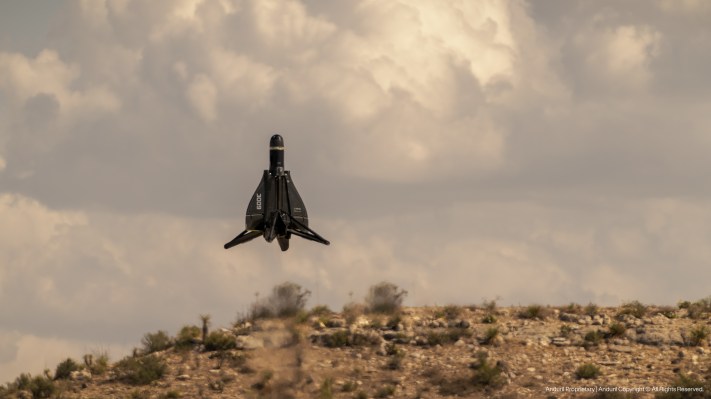Leading defense tech startup Anduril has developed a new product designed to take on the proliferation of low-cost, high-powered aerial threats.
The product is called Roadrunner, a modular, twin-jet-powered autonomous vertical take-off and landing (VTOL) air vehicle that’s designed for low costs. Anduril has also developed a variant called Roadrunner-Munition, or Roadrunner-M, a “high-explosive interceptor,” meaning it can carry a warhead and also defensively destroy aerial threats.
Roadrunner is unusual both in appearance and capability: it can take off, following and destroying targets; if there is no need to intercept the target, the vehicle can autonomously maneuver back to base for refueling and reuse. As Anduril’s chief strategy officer Chris Brose put it in a recent interview, “We’ve basically built a fighter jet weapon that lands like a Falcon 9.”
The product was built in response to the rise of fast-moving, autonomous aerial weapons that can be produced at a high volume and very low cost, a new kind of threat, Brose said. Unlike other solutions today, and the legacy missile systems that preceded them, the Roadrunner-M can also be reused.
“To my mind, this is the first recoverable weapon that has ever been fielded,” Brose said. “That is a pretty cool thing. The ability to deploy […] recover it and reuse it if you don’t actually employ it in an operation to kill another drone, completely changes how operators can fight with this capability. Today, they have a limited number of interceptors and if they decide to hit go, they are not getting it back.”
There are a handful of other major improvements versus legacy systems, Anduril says: faster launch and take-off time, three times greater warhead payload capacity, 10 times effective range and three times greater maneuverability in G-forces. Like the rest of Anduril’s family of systems, Roadrunner-M can be controlled by Lattice, Anduril’s AI-powered command and control software, or integrated into existing architectures.
The other big benefit is to the operator: When faced with a fast-moving threat, Roadrunner can launch immediately, image it and then receive a signal whether or not to engage. Because the product is reusable and recoverable, operators can act without the fear that they could lose an expensive asset.
Brose said the company’s been working in lock-step with an unnamed U.S. government partner since it started designing Roadrunner around two years ago.
“[National defense] often rightly gets the stereotype for just being very stodgy, very slow, very unimaginative, very unexciting,” Brose said. “I think as a company Anduril is the antithesis of that and Roadrunner is the embodiment of the kind of excitement that we believe exists in national defense and we’re very eager to try to bring back.”
